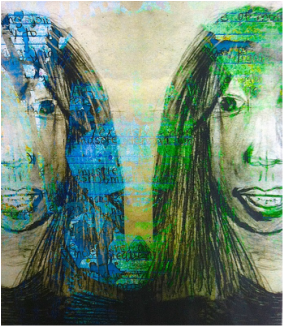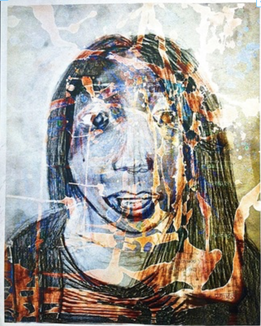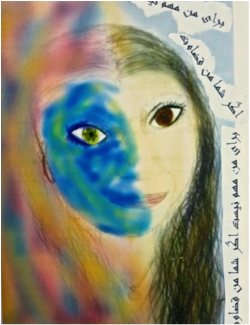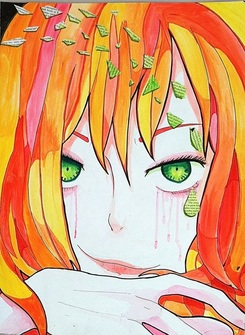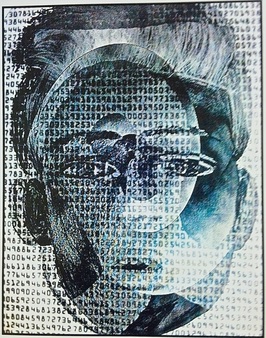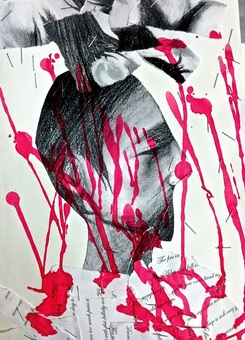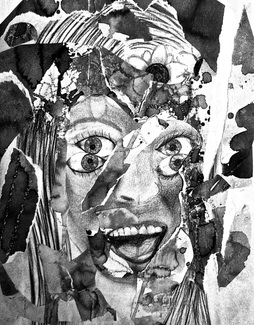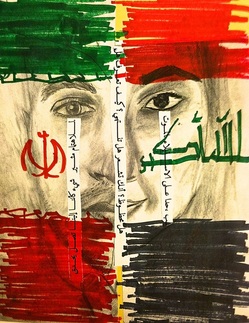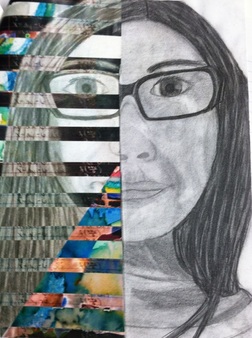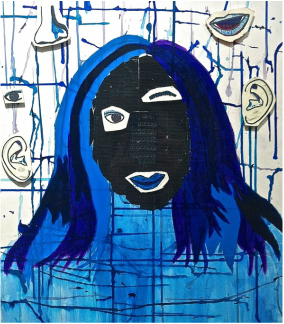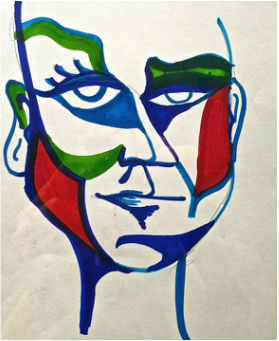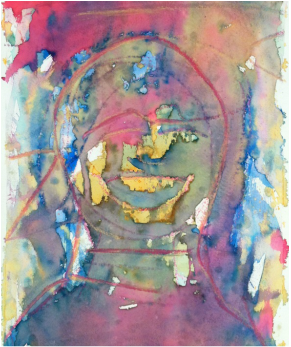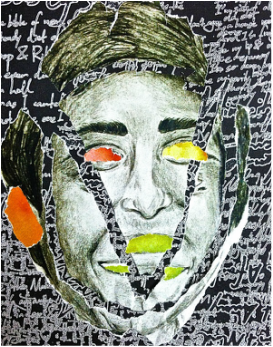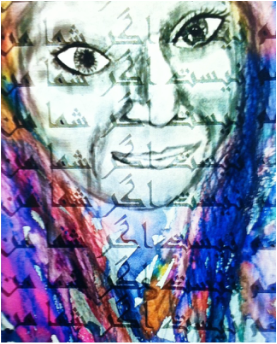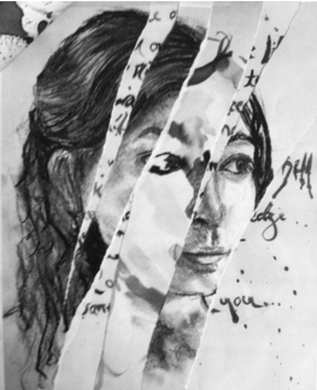
Portrait Experimentation
After a month of extensive planning from thumbnails, to sketches and multiple drawing and painting mock-ups, students combined tight and loose styles and developed a portrait that included text for a final assessment. All of the students began their process with a representational drawing of themselves or another person. Copies of their original portraits were produced and reconfigured via traditional methods such as drawing and painting, and through contemporary processes e.g., tearing-up and reworking a piece as a collage; dripping or splattering paint, or manipulating their canvases e.g., carving out layers of cardboard, or using industrial metals and materials as a base. Some students experimented with Adobe Photoshop and added colorful digitally enhanced layers. The choice of art materials for the final piece was left to the students. In some cases, the experimental pieces were just as powerful as the final works. The following are examples of both experimental and final images.
After a month of extensive planning from thumbnails, to sketches and multiple drawing and painting mock-ups, students combined tight and loose styles and developed a portrait that included text for a final assessment. All of the students began their process with a representational drawing of themselves or another person. Copies of their original portraits were produced and reconfigured via traditional methods such as drawing and painting, and through contemporary processes e.g., tearing-up and reworking a piece as a collage; dripping or splattering paint, or manipulating their canvases e.g., carving out layers of cardboard, or using industrial metals and materials as a base. Some students experimented with Adobe Photoshop and added colorful digitally enhanced layers. The choice of art materials for the final piece was left to the students. In some cases, the experimental pieces were just as powerful as the final works. The following are examples of both experimental and final images.
